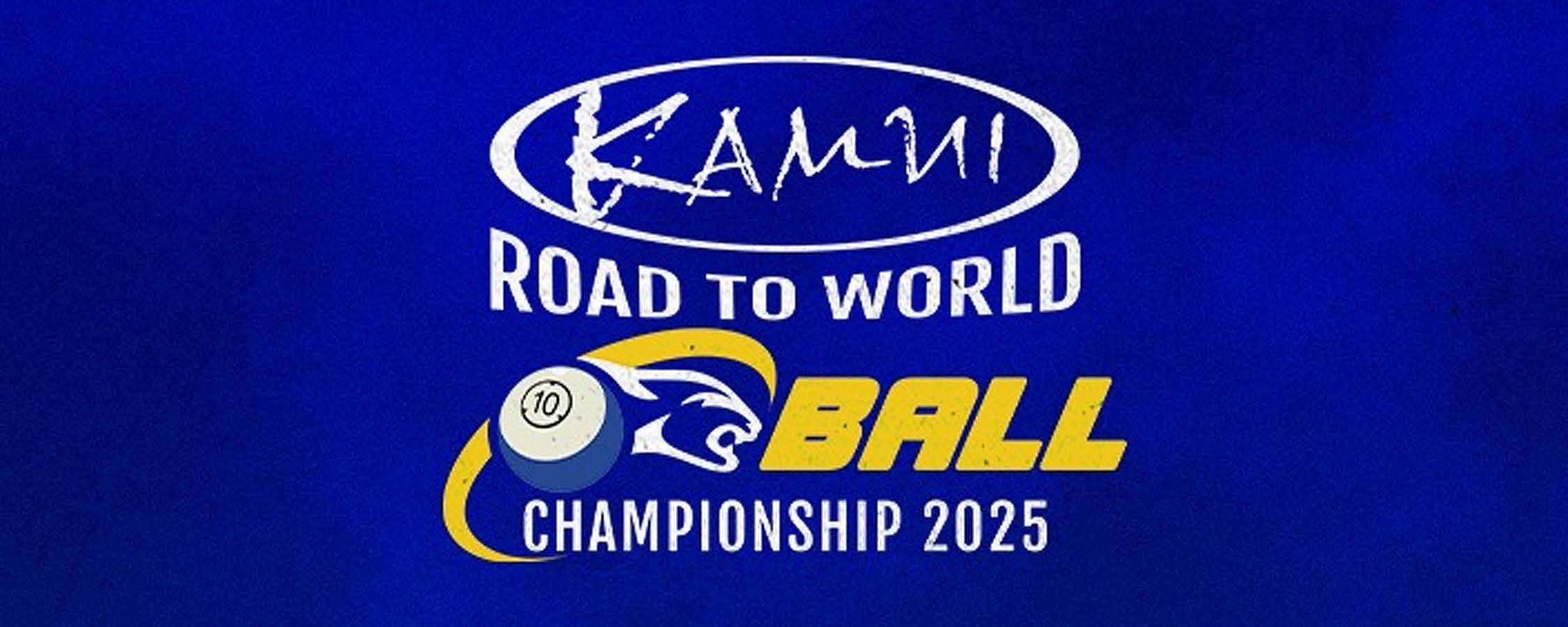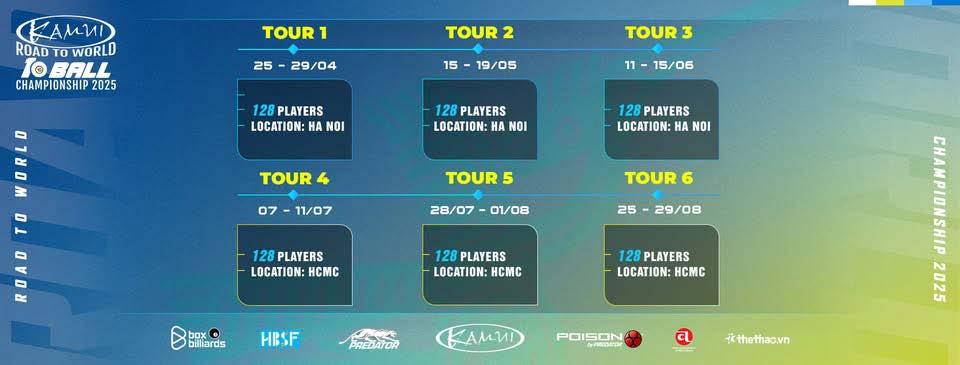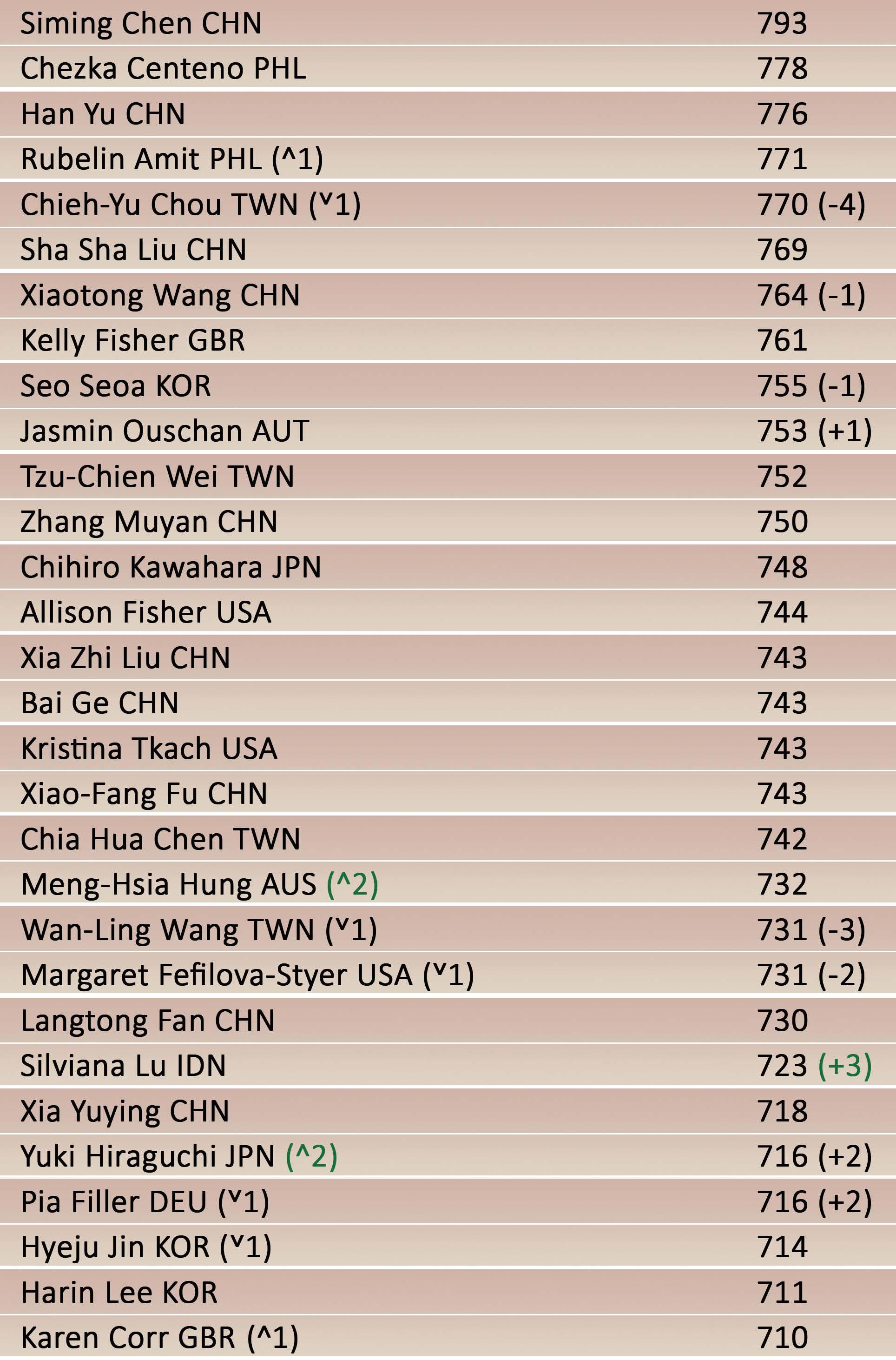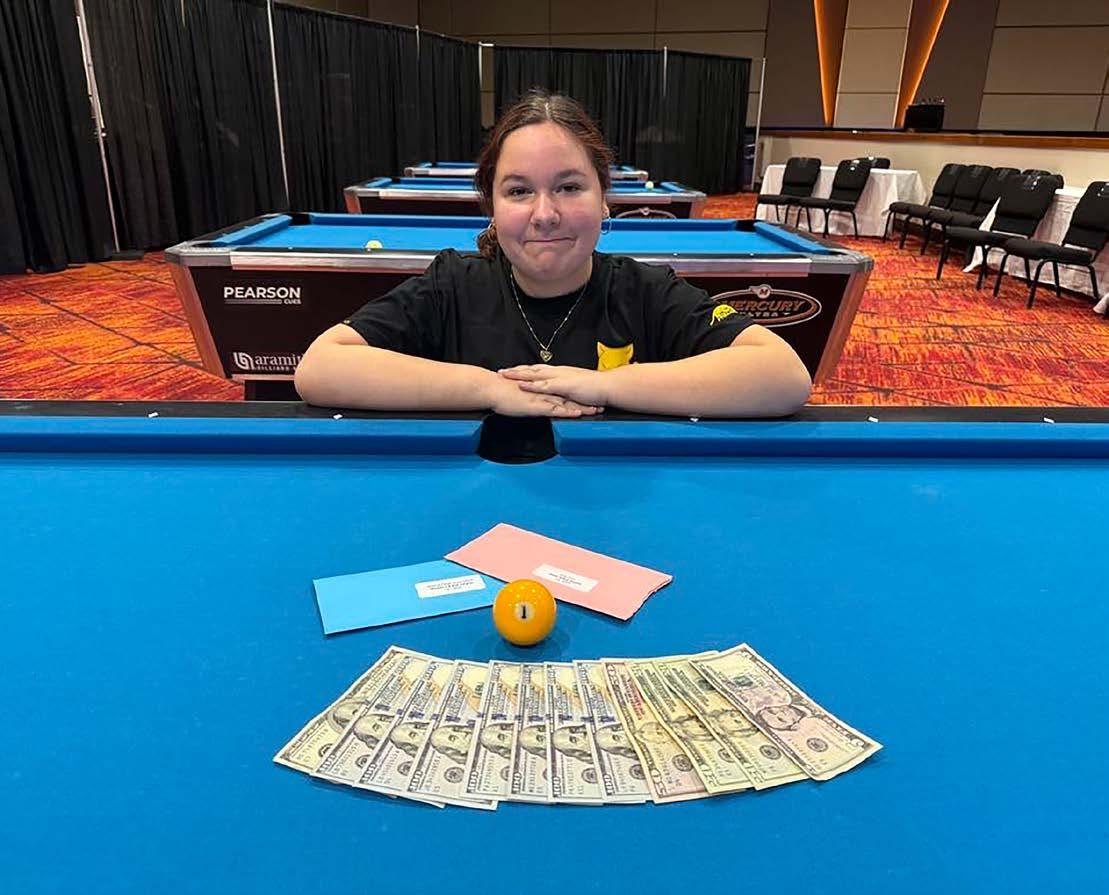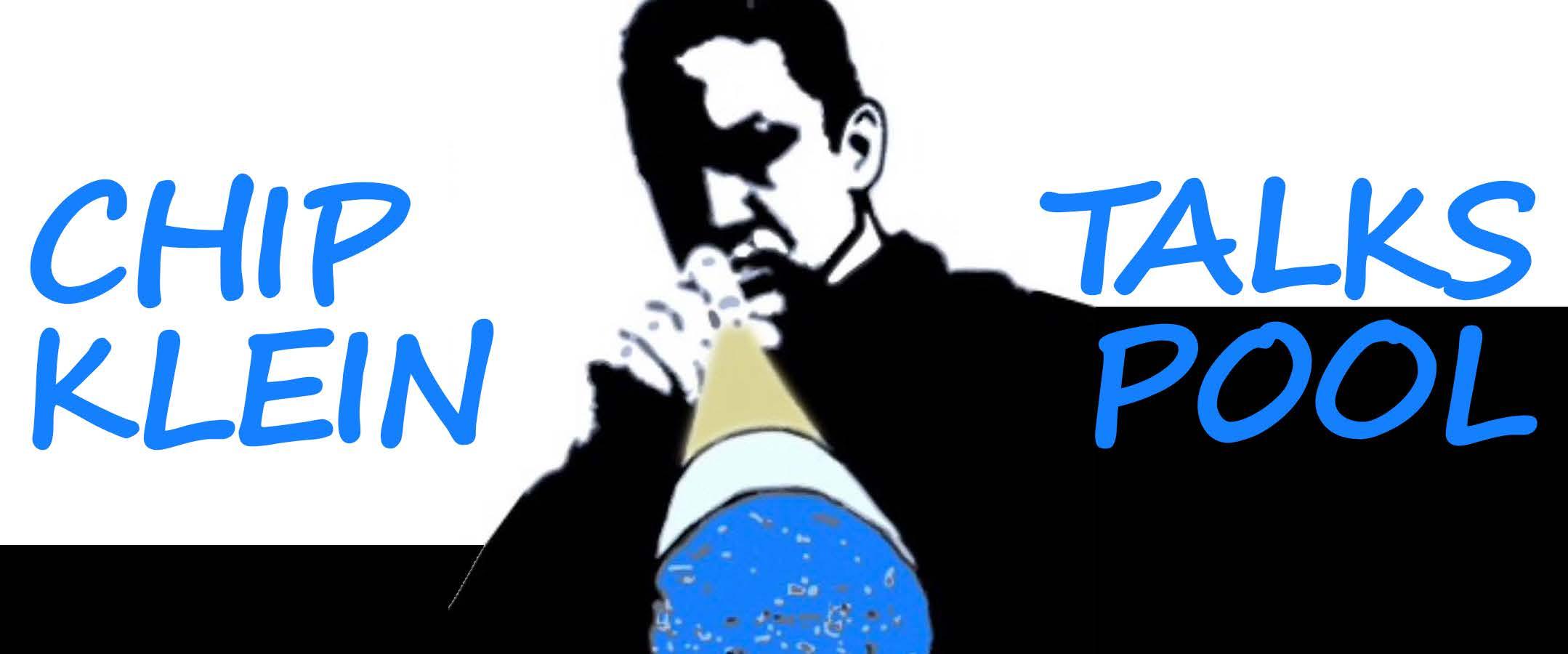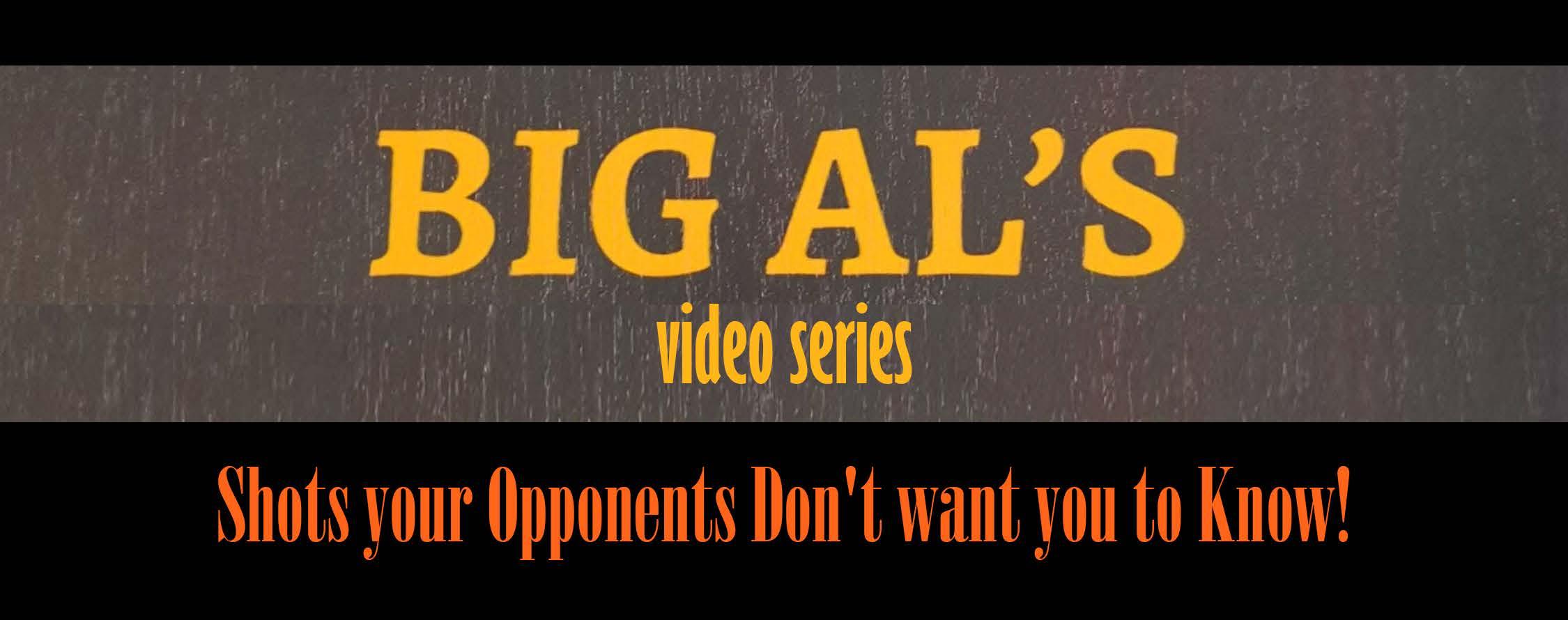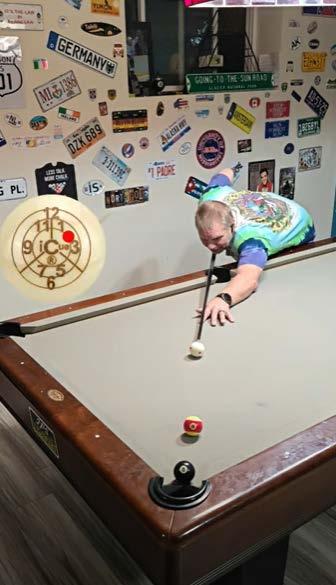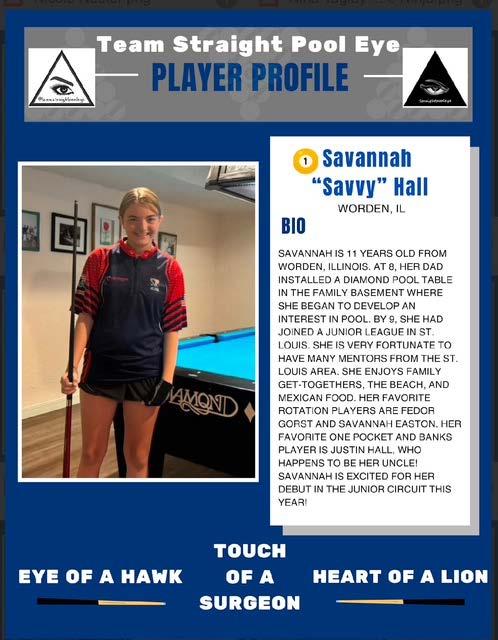










Pool players are athletes with less physical demands, but more mental skill requirements than athletes in other sports. Once fundamental pool skills are mastered, billiards primarily becomes a mental venture. So, the work you do on your pool mental skills is just as important as your time spent working on shotmaking and position play. And yet, most pool players do not spend much time addressing the mental aspects of playing pool. The mental side of pool is often overlooked. It is more fun to play pool or practice running balls than to work on mental skills. But, fifteen to thirty minutes per week of mental training can significantly improve your pool playing abilities. This is because the words and images you put in your brain are what create your physical motions.
Consistency
Many players want and strive for shot-making consistency and yet one of their weaknesses is the lack of a consistent pre-shot routine. You already have a pre-shot routine. You do something before each shot like chalk-up or take practice strokes. These are elements of a pre-shot routine but not nearly detailed enough. A good pre-shot routine is knowing and executing what you will consistently do mentally and physically before every shot.
Pre-shot Routine
All the mental and physical actions you take before striking the cue ball are called a pre-shot routine. It is
a key part of the aiming process because it bridges the gap, or connects what you mentally plan to do at the pool table with actually doing it.
Your pre-shot routine should be personalized to fit what you want to do before each shot so it will be slightly different than those of other pool players. To develop your pre-shot routine, start by listing all of the physical actions you want to consistently take before each shot like chalking your cue stick, walking around the table, lining up a shot, and the number of warm-up strokes you will take. Then list all the mental actions you consistently want to do like position planning, visualizing each shot, and relaxing. Combine your two lists into your pre-shot routine. To assist you, here is an example from a consistently good player:
Pre-Shot Routine
1. Pick up chalk, chalk cue tip, take a deep breath, exhale, and say to myself, “Relax.”
2. Walk around two to three feet from the table and survey the layout.
• Identify any potential shots, easy shots/pocket hangers – do not shoot these first if possible.
• Identify problem balls, clusters, and the balls that are blocking pockets – try to see any shots/ patterns to deal with them.
• Come up with two balls plus two angles run plan or defensive shot based on the table layout.
• Visualize shot – where hit cue ball (center,

follow, draw, spin), speed, & where object ball and cue ball will go. See the shot in its entirety.
• See target object ball and cue ball contact points & the aim line that accomplishes the appropriate cue ball and object ball overlap.
3. Place your rear foot on the aim line and step forward with your front foot, transition to shooter mode.
• Slide or adjust your bridge hand and place the cue tip behind the cue ball in line with the aim line.
• Move slowly from high to medium to low position focusing on the object ball aim point.
• If necessary, make one or two micro-aiming adjustments by slightly moving your front foot. If still not comfortable, stand up, and start over.
• Two short warm-up strokes. Confirm your stroke is straight and as level as possible.
• No thinking – shoot smoothly and follow through.
• Stay down until the balls stop moving and evaluate the shot.
“Embracing a Pre-shot Routine can revolutionize your gameplay, enhancing focus, minimizing errors, and ensuring precise shot execution.”
-Darren Appleton
Sitting
1. Missed last shot – briefly assess a correction, but do not dwell on it.
2. Relax – take a few deep breaths, rotate your shoulders back and forward, tense and relax your hands.
3. Survey Table:
• What balls have an clear path to what pockets?
• What balls are problems? How should you deal with them?
• Are there any potential blockers for a defensive shot?
Focus

Consistently following your pre-shot routine will bring consistency to your shotmaking. Over time it will become second nature, and you won't think about it, it will be your way.
Focus means concentrating on what you are doing at any particular moment to the point you cannot be distracted by anything. In a pool match, anything (sounds, people, movement, thinking about winning, negative thoughts, etc.) can be a distraction if you let it be. Your goal when playing pool is to keep your focus on what is most important for you to do at any particular moment, keeping your mind on the task at hand. A simple technique to accomplish this is to use a focus key whenever you are distracted or sense you are not focusing enough. As you go through your preshot routine, say this statement to yourself and fill in the blank:
The most important thing to do right now is...
Then focus your attention on doing it. Examples: Right before your break - The most important thing to do right now is to get a complete cue ball and head object ball overlap.
When surveying the table – The most important thing to do right now is to strategize a good plan.
When lining up your shot - The most important thing to do right now is to get perfectly aligned.
While taking practice strokes - The most important thing to do right now is to make this shot.
Your attention can only be focused on one thing at a time, or you are not focused. Following a logical focusing sequence can help you accomplish that:
• 1st Focus – pay close attention to only the table ball layout and come up with a good action plan.
• 2nd Focus – narrow your focus and try to see at least a two balls plus two angles pattern. Great if you see and plan even more shots. Visualize where your cue ball needs to end up getting to the next ball.
• 3rd Focus – visualize the cue ball striking your target object ball and the path of both balls to their final destinations.



Photos by Taka Wu
• 4th Focus – narrow your focus to seeing your cue ball and target object ball overlap, their contact points, and the aim line to achieve that. Carefully align yourself on the aim line, go down, and begin taking your practice strokes.
• 5th Focus – focus exclusively on the target object ball contact point and execute your shot.
• 6th Focus – stay down and watch the target object ball sink in the pocket and the cue ball come to a complete stop.
Additional actions you can take to stay focused:
• Take every shot seriously, even the easy ones.
• Hone your pre-shot routine to a precision machine you can trust under competitive pressure.
• Take your time, do not rush.
• When you miss a shot, don't dwell on it but ask yourself why and then regain your focus by keeping your eyes and mind on the table ball layout while sitting.
• Practice is the time to focus on your shooting mechanics and bodily sensations.


“Focus on the present moment, for that is where true excellence resides.”
-Earl Strickland
The significance of consistency and focus in pool cannot be overstated. Consistency, achieved through a welldefined pre-shot routine, ensures you approach each shot with the same level of preparation and precision. This routine becomes second nature over time, leading to more reliable and accurate shot-making. On the other hand, focus is about maintaining your concentration on the task at hand, blocking out distractions, and executing your shots with clarity and confidence. By integrating these mental skills into your practice, you can elevate your game, making each shot a testament to your dedication and mental fortitude. Embrace these strategies, and you will find yourself playing with greater precision and confidence.
Happy playing!










In the hallowed halls where cue sticks whisper tales of felt and fate, and the rhythmic click of colliding spheres echoes through generations, few names resonate with the same blend of awe and affection as Buddy Hall. Born in 1945, Charles "Buddy" Hall, the "Rifleman" of billiards, carved an indelible legacy, not just through his unparalleled skill but also through his enduring sportsmanship and vibrant personality. This tribute aims to chronicle the life and times of a true icon, a man who elevated the game of pool from a mere pastime to an art form, and in doing so, earned his rightful place in the Billiard Congress of America Hall of Fame.
Buddy Hall’s journey into the world of professional billiards began, as it often does for legends, with humble origins. Growing up in the small town of Metropolis, Illinois, his natural aptitude for the game was evident from an early

age. The local pool hall became his second home, a crucible where his raw talent was forged into precision. Unlike many of his contemporaries who might have focused solely on one discipline, Hall displayed a remarkable versatility, excelling in a variety of games including nineball, straight pool, and one-pocket. It was this adaptability, combined with a relentless dedication to practice, that laid the groundwork for his future dominance.
The moniker "Rifleman" was bestowed upon him for good reason. Hall's stroke was legendary for its unwavering accuracy and power. Spectators and fellow players alike marveled at his ability to pocket balls with surgical precision, often from seemingly impossible angles. His breaks were thunderous, scattering the rack with a force that announced his presence at the table. But beyond the raw power, there was an artistry to his game – a deep understanding of angles, spins, and cue ball control that allowed him to orchestrate complex run-outs with effortless grace. He played with a quiet intensity, his focus unwavering, yet always with an underlying passion that was palpable.
The 1970s and 80s marked the zenith of Buddy Hall's competitive career. He was a perennial contender, a force to be reckoned with at every major tournament. His trophy cabinet swelled with victories, including multiple U.S. Open Nine-ball Championships, an event considered by many to be the most prestigious in American billiards. Each win was not just a testament to


his individual skill but also a reflection of the evolving landscape of professional pool, which was gaining increasing visibility and a dedicated following. Hall, with his charismatic demeanor and captivating style, played a significant role in this growth, drawing new fans to the sport and inspiring a generation of aspiring players.
Perhaps one of Hall’s most enduring qualities, beyond his prodigious talent, was his sportsmanship. In a highly competitive environment, where egos could clash and tensions could run high, Buddy Hall remained a gentleman. He treated his opponents with respect, whether in victory or defeat, and his conduct at the table was always exemplary. This integrity earned him the admiration of his peers and cemented his reputation as a true ambassador for the game. He understood that the spirit of competition was not just about winning, but also about upholding the values of fairness and respect.
Beyond the bright lights of the tournament arena, Buddy Hall was a mentor and an inspiration. He willingly shared his knowledge and experience with younger players, offering advice and encouragement. Many professional players today credit Hall with influencing their own game, not just through his masterful play but also through his approachable nature and willingness to impart wisdom. He believed in giving back to the sport that had given him so much, and his generosity of spirit extended far beyond the confines of the pool hall.
His life, however, was not without its challenges. The relentless travel, the pressures of competition, and the constant demand for peak performance could take their toll. Yet, Buddy Hall faced these hurdles with the same resilience and determination that characterized his play. He embraced the lifestyle of a touring professional, understanding that the pursuit of excellence often required sacrifice.
In 2000, Buddy Hall’s immense contributions to the sport were officially recognized with his induction into the Billiard Congress of America Hall of Fame. It was a fitting tribute to a career that spanned decades and left an indelible mark on the history of billiards. The Hall of Fame honor was not just about his titles, but about the impact he had on the game, the way he carried himself,
and the inspiration he provided to countless individuals.
Even in his later years, Buddy Hall remained connected to the game he loved. While the rigors of professional touring eventually receded, he continued to be a beloved figure at exhibitions, pro-ams, and casual games. He enjoyed sharing stories from his illustrious career, offering insights into the evolution of the game, and simply enjoying the camaraderie that the pool hall fostered. His presence, whether playing or simply observing, brought a sense of history and gravitas to any billiard setting.

The legacy of Buddy "The Rifleman" Hall is multifaceted. It is the legacy of a phenomenal talent, a player who pushed the boundaries of what was thought possible on the felt. It is the legacy of unwavering sportsmanship, a testament to the idea that success can be achieved with integrity and respect. It is the legacy of a mentor, a generous spirit who invested in the future of the game by nurturing new talent. And perhaps most importantly, it is the legacy of a man who loved billiards with every fiber of his being, a passion that was infectious and inspired millions.
As the cues continue to break and the balls continue to roll, the name Buddy Hall will forever be etched in the annals of billiards history. He was more than just a player; he was an icon, a true champion, and a gentleman of the green felt. His life serves as a shining example of dedication, skill, and an enduring love for the game, ensuring that the legend of the Rifleman will continue to inspire generations of billiard enthusiasts for years to come.



You hear the term cue ball control quite often in pool. But how much can you actually control? We actually can control 3 things on a pool shot; where we aim, what spin we apply to the cue ball, and the speed of the shot. And while all three of these things combine to give us cue ball control, today I want to focus on just one part of the equation, the speed of the shot.
Most pool shots can be successfully completed using lag speed or slightly more than lag speed.
Many beginning players have a tendency to shoot their shots harder than necessary. This can result in a missed shot, missed position, or both.
Shooting hard makes your pocket smaller. That only means that you have less margin for error. A soft shot can be slightly off target and still end up in the bottom of the pocket, while the same shot at a faster speed can end up rattling the pocket and failing to drop.
Another problem with shooting too hard is allowing the cue ball to run too far after contacting the object ball. A cue ball traveling around the table can end up where you didn’t plan. It can easily hit other balls and change direction, or worse, find its way into a pocket. Watch better players shoot, and you will notice they usually only move the cue ball the shortest distance needed to get position for their next shot. Getting shape
by moving the cue ball around three rails might look impressive, but moving it a few inches to get position is usually the safer option.
The third issue with shooting hard is the potential loss of accuracy. When you are anticipating a highervelocity shot, your mind sends signals to your muscles to prepare for the shot. This can easily result in extra tension, which is the enemy of a smooth stroke. Your best stroke happens when you are relaxed and allow your natural stroke to execute the shot.


So how hard should you shoot? The simple answer is you only shoot hard enough to pocket the object ball and get shape for your next shot. We talk about pocket speed, which is just enough to put the object ball in the pocket, and then add just enough speed for the cue ball to open up your next shot. In pool school, we teach a speed scale designed to develop muscle memory for different speeds.
it doesn’t take much more energy than a lag shot, but results in the cue ball traveling another 3 or 4 feet.

As I pointed out earlier, most of your shots can be done at little more than lag speed. The easy way to develop that feel is a simple drill for your standard stroke speed.
Using your SPF pendulum stroke, which I always recommend, place the cue ball on the head string, and shoot down-table as you would shoot a lag shot. But here, your goal is to send the cue ball down to the foot rail, back to the head rail, and then come to rest between the two side pockets. You will see that it doesn’t take much more energy than a lag shot, but results in the cue ball traveling another 3 or 4 feet. (That’s a lot of distance on a pool table!). This is usually plenty of energy to make your shot and move into position for your next shot. Mastering your stroke speed will give you a great advantage in both shot-making and cue ball control.
Until next time.
Steve Jennings ACS/SPF/PBIA Master Instructor

Playing pool since the age of 10, first learning on a table at home, and into pool rooms a few years later, I won several base championships while in the service. After my discharge, I continued to play recreationally, and in several regional tour events.
I started coaching and teaching game strategies in the 90s. I worked with several Master instructors reaching Master instructor status in 2015. Now Director of Training for the Southeastern Billiard Academy, and teaching classes as often as I can. I train/certify new instructors and look forward to help every player achieve their fullest potential.









In the intricate world of billiards, where precision meets passion and artistry blends with physics, the cue stick is more than just a tool—it's an extension of the player's will. For serious enthusiasts and professionals alike, the pursuit of the perfect cue is a never-ending quest for that elusive balance of feel, performance, and aesthetic appeal. Stepping into this arena with a revolutionary approach, GoCustoms has carved out a niche for itself, particularly with its highly acclaimed JMA and NVDB special edition custom-made cue sticks. These aren't just cues; they are meticulously engineered masterpieces, pushing the boundaries of material science and traditional craftsmanship to offer an unparalleled playing experience.
A New Horizon in Cue Manufacturing
Hailing from the Netherlands, GoCustoms has rapidly ascended in the cue sports industry, earning a reputation for its commitment to innovation and player-centric design. While they are renowned for their carbon fiber shafts, which have garnered widespread praise for their low deflection, consistent performance, and exceptional energy transfer, their full cues, especially the special edition lines, truly showcase their ambition. GoCustoms understands that the modern player demands not only cutting-edge technology but also the tactile feedback and timeless beauty that harken back to the game's rich heritage.
Their philosophy revolves around customization and
performance, allowing players to tailor their cues to their exact specifications—from tip choices and diameter to weight and length. This bespoke approach ensures that each cue is a personal statement, optimized for the individual's game.
The JMA Special Edition: Where Tradition Meets Innovation
The GoCustoms "JMA" Special Edition cue is a testament to the brand's innovative spirit, a masterful fusion that promises the best of both worlds: the power and precision of carbon fiber with the nuanced feel and feedback of wood. This hybrid construction is a significant departure from many all-carbon cues on the market, addressing a common desire among players who appreciate the benefits of carbon but miss the traditional feel.
At the heart of the JMA lies GoCustoms' advanced carbon coring technology. This involves a carbon core running through the cue, providing the inherent stiffness, exceptional energy transfer, and significantly low deflection that carbon fiber is celebrated for. However, what truly sets the JMA apart is its unique combination of materials in the butt section. It features a JUMA and wood handle, delivering a tactile experience that resonates with the natural warmth and feedback of a traditional wooden cue.



JUMA, a high-quality, resin-based material, plays a crucial role in this hybrid design. Known for its durability, impact resistance, and machinability, JUMA also possesses thermoformable properties, allowing for intricate designs and a fine finish. Its density and visual appeal make it an ideal choice for premium cue construction, contributing to the JMA's unique aesthetic and playing characteristics. This carefully chosen combination ensures that while the JMA delivers the performance metrics of a cutting-edge carbon cue, it retains a familiar and reassuring feel in the hand, minimizing the often-cited "hollow" or "glassy" sensation associated with some full carbon cues.
Key Features of the JMA Special Edition:
• Hybrid Build: JUMA and wood handle section with a carbon core.
• Carbon Coring Technology: Enhances energy transfer, accuracy, and reduces deflection.
• Excellent Feel and Feedback: Comparable to allwooden cues, offering a more traditional playing experience.
• High Durability: Built to withstand the rigors of competitive play.
• Fully Customizable: Tailored to individual player specifications, including a wide array of color options (Black GEM, Blue GEM, Red Dragon, etc.) and joint configurations (3/8-10, Radial, Unilock, etc.).
• Lifetime Warranty: A testament to GoCustoms' confidence in their craftsmanship.
For players who have found themselves torn between the modern advantages of carbon fiber and the beloved feel of wood, the JMA Special Edition offers a compelling solution. It’s a cue engineered for performance, yet designed with a timeless feel that will appeal to a broad spectrum of players, from aspiring pros to seasoned veterans.



The NVDB Special Edition: Designed for Champions
The collaboration between GoCustoms and pool legend Nick van den Berg (NVDB) has resulted in a special edition cue line that embodies precision, balance, and unwavering consistency. The NVDB cue line, designed for champions, reflects van den Berg's exacting standards and GoCustoms' dedication to highperformance equipment.
Similar to the JMA, the NVDB cue employs a hybrid construction, but with a distinct material choice for its exterior. The NVDB cue is crafted from a unique blend of Ebonite and Carbon Fibre. Ebonite, a hard rubber material historically used as an ebony wood substitute, provides a deep, rich color and a natural density that offers a wood-like touch with enhanced durability. This material choice creates a cue that offers the power and low deflection of a full carbon cue while maintaining a superior feel and feedback.
The NVDB cue is a prime example of a cue built for translating the power and low-deflection benefits of carbon fiber into a cue that feels incredibly natural and responsive in the hand. The meticulous handcrafted nature of each NVDB cue, built to order and tailored to individual player specifications, further emphasizes its premium status and championship pedigree.
Key Features of the NVDB Special Edition:
• Hybrid Build: Ebonite exterior with a Carbon core. Collaboration with a Champion: Developed in close partnership with Nick van den Berg.
• Perfect Balance: Engineered for optimal weight distribution and handling.
• Low Deflection and Precise Control: Benefits of GoCustoms' carbon core technology
• Exceptional Feel and Consistency: Ebonite offers a durable yet wood-like touch.
• Lifetime Warranty: Reinforces the commitment to quality and longevity.
• Customizable Options: Wide range of joint types, tips, diameters, lengths, and weight options.
The NVDB Special Edition is more than just a cue; it's a tool refined through the insights of a top professional, built to deliver the consistency and control required to perform at the highest levels of the game. Its aesthetic is understated yet sophisticated, reflecting the seriousness of its performance capabilities.
The GoCustoms Advantage: Beyond the Special Editions
While the JMA and NVDB special editions stand out as pinnacle examples of GoCustoms' capabilities, it's important to understand the broader advantages that define their entire product line.
Carbon Fiber Expertise: GoCustoms has truly mastered the art of carbon fiber cue and shaft manufacturing. Their carbon fiber shafts are lauded for their incredibly low deflection, meaning the cue ball deviates minimally even with significant English. This translates to more accurate shot execution and greater control over the cue ball's path. The stiffness of their carbon fiber also ensures maximum energy transfer, resulting in powerful and consistent hits with less effort.
Customization at its Core: A defining characteristic of GoCustoms is their commitment to customization. Every cue is built to order, allowing players to choose from a vast array of options. This includes:
Joint Types: From standard options like Radial and UniLoc to less common ones, ensuring compatibility with a wide range of existing butts.
Tip Choices: A comprehensive selection of popular tips, including various Kamui, G2, and GO Pulse options, catering to different preferences for feel and control.
Diameter and Weight: Fine-tuning the shaft diameter and overall cue weight to match individual playing styles and preferences.
Length and Wrap Options: Further personalizing the cue for comfort and grip.




Aesthetic Customization: Beyond performance, players can select from a variety of finishes, ring work, and even personalized engravings, truly making the cue their own.
Exceptional Customer Service: Reviews consistently highlight the responsiveness and helpfulness of the GoCustoms team, particularly Goran Kobas, the driving force behind the brand. This personalized customer service experience, from initial inquiry to post-purchase support, further enhances the value proposition of a GoCustoms cue.
Durability and Longevity: Carbon fiber, by its nature, is incredibly durable and resistant to warping, dinging, and other common issues faced by wooden cues. GoCustoms leverages this inherent strength, offering a lifetime warranty on their cues and shafts, providing players with peace of mind and a long-term investment.
The Verdict: Are They Worth the Investment?
In a market saturated with options, GoCustoms' JMA and NVDB special edition cues emerge as compelling choices for players seeking to elevate their game. Their innovative hybrid construction, combining the power of carbon fiber with the traditional feel of wood or ebonite, create cues that are not simply mass-produced instruments; they are custom-crafted tools designed to enhance a player's performance.
The price point reflects the premium materials, advanced engineering, and bespoke craftsmanship involved. Considering the benefits—superior accuracy, enhanced control, consistent performance, and exceptional durability—the investment in a JMA or NVDB special edition cue from GoCustoms is a tangible commitment to one's passion for the game. For the serious billiard player who values both cutting-edge technology and the nuanced feel of a finely crafted instrument, the GoCustoms JMA and NVDB special edition cue sticks represent a significant leap forward.
They are more than just cues; they are a testament to the evolving art of billiards, designed to empower players to strike with confidence, precision, and a renewed sense of connection to the game they love.







In my years of coaching, I frequently ask pool players how important they think the mental game is to their success when playing. On average the answer is usually 9 out of a possible 10. I then ask another question that goes something like, “I think you are right. I believe it’s that important too. How often do you practice your mental game?” Amazingly, despite placing a high value on the mental game, people report rarely ever practicing it.
So, what’s getting in the way? And why do they neglect the mental game? From my perspective, the primary obstacle is a lack of awareness. Most pool players simply don’t know about the mental game and are unaware of how they can practice it to improve. Other than the occasional article in a pool magazine, the culture of the game does not promote the mental game and as a result, the average pool player has very little exposure to it. In addition, most instructors focus their efforts on the mechanics of the pool stroke rather than mental game components.
Here are some fundamental ways you might consider integrating the mental game into your practice and play:
1.) Slow things down
So often, in pool, our minds are racing cluttered with extraneous thoughts making it difficult to accurately perceive what is going on. If you’ve ever watched your stroke on video, you are bound to have had the
experience of watching yourself do something that you didn’t realize you were doing. As a result of seeing what was happening on the video, it became much easier to adjust. But since we can’t video our minds, we need to rely on self-awareness to improve mentally. By slowing down, you will begin to develop an awareness of what is happening rather than what you thought was happening.
2.) Pay attention to your body and breathing
Both can be powerful indicators of our mental state and are much easier to observe and correct than our minds. When you practice and play, notice if there is any tension in your body. Common places people physically carry stress are in their neck, shoulders, and lower back. By simply noticing where the tension is it will help to reduce it. Obviously, tension and an effective pool stroke don’t mix. Also, pay attention to your breathing. Is it short, fast, restricted, and in your chest? Or is it long, slow, free, and deep in your abdomen? When you practice and play you should be striving for the later as it is conducive to improved focus and concentration.
3.) Develop a consistent and repeatable pre-shot routine
The more consistent and repeatable an action or behavior is, the less stressful it is to us. Thus, a pre-shot routine can be incredibly helpful to consistently achieve the


proper mindset needed. In addition, pre-shot routines are an opportunity to re-focus on the task at hand and help reduce fear and anxiety.
4.) Visualize your shots
By visualizing your shots, you are giving yourself an opportunity to “virtually” stroke the shot before it even happens, priming your mind and body to execute the shot more effectively. When you visualize the shot, be as descriptive and specific as you can trying to include as many of your senses as possible. What will it look like? What will the speed and spin look like? Where will the cue ball end up? What will it sound like?
5.) Just because you think it, doesn’t mean it’s true
The things we think about ourselves are just thoughts, they are not truths, or facts. If you make the mistake of believing the things that you say about yourself are facts, you can find yourself stuck in an identity that will guide your behavior in ways not helpful to your performance. For example, I played with someone recently, who after missing an important shot, said, “I’m the worst player in the world under pressure”. It was clear that my friend did not think very highly of his ability to play under pressure, and I have no doubt that the identity he created for himself contributed to why he struggled so much in high-pressure situations.
You can have the best stroke in the world, but if your mental game isn’t strong, your chances of performing well significantly decrease. Take some of these ideas to the table the next time you play. I am confident that with some practice, you will play a better game and enjoy playing more.



Anthony Beeler is the current Billiards Instructor of the Decade and is a former BCAPL National Champion. He has numerous “Top 25” national finishes and is the primary author of the ACS National Billiards Instructor’s Manual. He has also authored the book Unstoppable! Positive Thinking for Pool Players. Anthony currently has the highest established Fargo Rating of any Master Instructor. He has won over 300 tournaments and has defeated numerous professional players in tournament competition.


The silent arbiter of a billiard player's touch, the cue stick, is a marvel of engineering and craftsmanship. While its shaft and butt command most of the visual attention, it's the often-unseen hero—the joint—that truly dictates the feel, feedback, and overall performance of the cue. Far from a mere connecting point, the joint is a sophisticated interface designed to seamlessly transfer energy from the player's stroke to the cue ball. Understanding the purpose and various types of billiard cue joints, and the benefits of the more popular styles, is crucial for any player looking to optimize their game.
At its core, the purpose of a billiard cue joint is twofold: to allow for easy portability and to provide a consistent and predictable hit. A solid, one-piece cue, while offering an uninterrupted transfer of energy, is cumbersome to transport. The joint solves this practical issue, allowing a cue to be broken down into two or more sections. However, this convenience must not come at the expense of performance. The joint must ensure that when assembled, the cue feels and performs as close to a single, solid unit as possible, maintaining rigidity, minimizing vibration, and facilitating a true, straight stroke.
The variety of cue joint designs on the market is a testament to manufacturers' ongoing quest for the perfect balance of feel and functionality. These designs primarily differ in their pin type (the male threaded part), collar material, and the overall fit between
the pin and the receiver (the female threaded part). One of the most ubiquitous and enduring joint styles is the 5/16 x 18 Modified Joint. This refers to the threading size (5/16 inch diameter with 18 threads per inch) and a "Modified" pin profile, which is slightly different from a standard screw thread, often with a more aggressive pitch for quicker engagement. The benefits of this joint are numerous, contributing to its widespread popularity. Firstly, its relatively large and robust threads provide excellent durability, making it less prone to stripping or damage even with frequent assembly and disassembly. Secondly, the larger surface area of the threads allows for a secure and solid connection, which many players report translates to a "solid" hit and good feedback. The Modified joint is a workhorse, offering a reliable and consistent feel that appeals to a broad spectrum of players, from casual enthusiasts to seasoned professionals. Its widespread adoption also means that replacement parts and customization options are readily available.
Another highly regarded and increasingly popular joint type is the Radial Pin Joint. Characterized by its unique radial thread pattern, this joint typically features a larger diameter pin with fewer, wider threads that spiral outwards from the center. The key benefit of the Radial Pin joint lies in its exceptional concentricity and stability. The design promotes a very tight, precise fit between the pin and the receiver, minimizing any lateral movement or play. This tight fit often results




in a very "crisp" and "direct" feel on impact, allowing players to feel the cue ball's reaction with great clarity. Many professional players gravitate towards Radial Pin joints for their enhanced feedback and the perceived ability to impart more nuanced spin on the cue ball. The wider threads also make it quicker to assemble and disassemble the cue.
For players seeking an extremely consistent and often "softer" feel, the Uni-Loc Joint has gained considerable traction. Unlike traditional threaded joints, the UniLoc system utilizes a unique quick-release mechanism that locks the shaft and butt together with a single, quick turn. The pin itself is often a proprietary design, frequently featuring a stepped or conical shape. The primary advantage of the Uni-Loc joint is its remarkable speed and ease of assembly. Players can break down and reassemble their cues in mere seconds, which is a significant convenience in competitive play. From a performance standpoint, Uni-Loc joints are often praised for providing a very consistent and forgiving hit. The design is engineered to minimize vibration and often results in a feel that is less "harsh" than some metalon-metal joints, which can be preferred by players who want a smoother transfer of energy.
Beyond these more dominant styles, other joint types exist, each with its own characteristics. Piloted joints, for instance, feature a protruding "pilot" on either the pin or the receiver that precisely aligns the shaft and butt before the threads engage. This design enhances stability and ensures a perfectly straight connection, further minimizing any potential for misalignment. While sometimes incorporated into 5/16 x 18 or Radial Pin designs, a distinct piloted joint often uses a different thread pattern.
The material of the joint collar also plays a significant role in the overall feel of the cue. Common materials include stainless steel, brass, and various types of highimpact plastics or composites like phenolic.
Stainless steel joints are known for providing a very solid, firm hit with excellent feedback. They are durable and resistant to wear. Brass joints tend to offer a slightly "softer" or warmer feel compared to steel, often preferred by players who like a little more absorption of impact vibration. Phenolic or composite joints are lightweight and can contribute to a more "lively" or responsive feel, often found in cues designed for maximum power transfer or reduced deflection. The choice of collar material is largely a matter of personal preference and how a player perceives the resulting feedback.
Ultimately, the "best" cue joint is a deeply personal choice. What one player describes as a "solid" hit, another might find too "stiff." The nuances of feel, feedback, and playability are subjective. The purpose of understanding the different joint types is not to declare one definitively superior, but rather to equip players with the knowledge to make an informed decision based on their playing style and preferences. Many manufacturers offer cues with different joint options, allowing players to experiment and discover what truly resonates with their touch. In the intricate dance between player, cue, and cue ball, the joint stands as a silent, yet crucial, partner, profoundly influencing the communication between hand and sphere, and ultimately, the success of every stroke.




For anyone who plays a sport, there is a pinnacle of achievement that only a select few can enter; the Hall of Fame. The Hall of Fame is the ultimate award that will stay with people for the rest of their lives and far past.
Anyone who is a member of a Hall of Fame is the crème de la crème of their given sport. Pool has a national Hall of Fame in the BCA Hall of Fame. States are establishing their own Billiards Hall of Fames to recognize individuals in the industry from the area. In this edition, we will highlight the Wisconsin Billiards Hall of Fame. Starting in 2018, the Wisconsin Billiards Hall of Fame has given the ultimate recognition of

Wisconsin Billiards' excellence. The potential Hall of Fame candida tes are nominated by and chosen by the Hall of Fame membership. Membership is open to anyone who pays for the membership, even if they are not from Wisconsin. 100% of the membership money is given to the Wisconsin pool community. The initial class for the Wisconsin Hall of Fame are Jerry Briesath, Willie Munson, Connie O’Heron, and Bruce Venzke. The event annual Hall of Fame event features a banquet, the Hall of Fame ceremony, and the Hall of Fame Tournaments. The Hall of Fame tournaments feature a mix of cue disciplines each year including 9 ball, 10 ball, straight pool, one pocket, banks, and 3-cushion. The




past winners are a list of who’s who in the Wisconsin pool including former Mosconi Cup member and Wisconsin native Tyler Styer.
The Wisconsin Billiards Hall of Fame is run by a sevenperson board consisting of President and Founder Jon Kramer, Vice President and co-founder Gregg Andler, Treasurer Jan Maglio, Secretary Kelly O’Heron, and members Claudio Parrone Sr., Priya Nataraj, and Mat Strong. I had the opportunity to chat with Jon about the organization. For more information about the Wisconsin Billiards Hall of Fame, check out www.wibhof.org
Where did the idea for the Wisconsin Billiards Hall of Fame come from?
A friend of mine was inducted into the Waukesha, WI Billiards Hall of Fame. After seeing it posted on social media, some of us started questioning why we didn't have one for the entire state because we have so many legendary pool players, instructors, cue makers, and more here. After researching, we found out there wasn't a single state in the entire country that had its own Hall of Fame. There were several of the larger national ones, of course, like BCA for example. We decided to give it a go. We did some fundraising on the idea and hired a lawyer to help us form the company as a 501c3. We felt that if we were to start a Hall of Fame, that it should also be a non-profit and designed to give back to the billiards community in need.
Who determines the nominees for the HOF?
Our ballot always has 15 nominees and 4 get inducted each year. The initial list was formed by a questionnaire given to roughly 30 legendary players from our state, and who they felt was worthy of the Hall of Fame. We asked each of them to offer their top fifteen nominees and then compiled all those results to create the inaugural ballot. Then, each year our members, along with the board of directors, vote for four people. At the same time, they can nominate new people to the ballot, once again getting us back to fifteen nominees.

What do the HOF members receive?
Each inductee is given a custom-built award that resembles a cue design, but in a 1ft long version. They are all handcrafted by the award-winning Jacoby Custom Cues each year. They also are added to the Hall of Fame pages on our website. And, there is a large plaque that holds all the inductee names each year, along with our list of sponsors. After each event, the plaque remains at that pool hall until the next year's event at a new location, so it is essentially a traveling trophy for everyone to enjoy.
Multiple people get to vote for the HOF. What do you personally look for in a candidate?
We have specific criteria for eligibility, and candidates must check a few of the boxes but not necessarily all of them.
1. The nominee must have shown dignity, class, and respect for the game of billiards and others around them.
2. They must have either A: Attained proven, exemplary billiards achievements, or B: unquestionably promoted the game of billiards in Wisconsin.
3. Must be a minimum of 45 years of age.
4. The nominee must have been involved with billiards in Wisconsin for a minimum of 20 years.
5. They must not be on a billiards "ineligible list" derived from misconduct at a billiards event or a personal criminal record (board decision).


When did you first see pool?
We had a pool table in the house growing up, but I never really played. My dad had a friend come over regularly to shoot with him but at a young age didn't have much of an interest. I really started to play pool when I met a good friend of mine in college at the University of Wisconsin Eau Claire. He was and still is a great player and he took me under his wing and taught me the game.
Who are some of your favorite players to watch and why?
My favorite player has always been Thorsten Hohmann, he's incredibly talented and always seems so cool under pressure. I've never met him but he seems like he's a really good guy. Also, as a player in the USA, how can you not cheer for a guy like Shane Van Boening!
What can you say about the inaugural class of 2018?
The first Hall of Fame class will always be special for me because it's where it all started. We hosted our first event at the Mad Apple Burger and Billiard company in Appleton. The guest speaker was Jeanette Lee, and we had 4 amazing individuals get inducted. Class of 2018 was Jerry Briesath, Willie Munson, Connie O'Heron, and Bruce Venzke.
There are four members added each year. Is there a reason why the number is only four?
Initially, as a board, we decided on 4, a good even number. There are talks that eventually we may reduce the number, but we have many worthy nominees for years to come!
Does your organization host any other events and who are some of the people responsible?
We only host one event each year, Hall of Fame Weekend, always in October. We rotate to different venues each year making sure we are representing the whole state of Wisconsin. We host an amazing dinner banquet for the inductions. Great food and amazing speeches by some of the legends in our state. Our board of directors does a great job with all the planning that goes into it, so it's a

big team effort. After the banquet, the remainder of the weekend is comprised of various tournaments and we draw players from all over the state to compete.
The HOF tournament has a really cool touch with multiple disciplines present. Whose idea was it to first have a tournament in conjunction with the event and then to offer multiple cue sports?
Our Hall of Fame Tournament each year is a little different. We mix up the formats and try some new things each year. Also, each venue is different so that plays a factor in how many players we can have, and what games make the most sense. Last year in 2024 was the first year we added a junior event, fully funded and sponsored by WSPA!
If you could play any player, living or deceased, who would it be and what game?
Probably Willie Mosconi in straight pool, Efren Reyes in 9-ball or 10-ball, and I'd like to challenge Sky or Billy in banks someday. I'm not much of a 1-pocket player.
Where do you see the Wisconsin Billiards Hall of Fame in 5 years?
Hopefully, still going strong! We built a business model that is funded through memberships and sponsorships so it is fully sustainable. Also, aside from operating costs like maintaining our website, WIBHOF.ORG, all of our board members are volunteers so there are no salaries being paid. That was one of the initial things with forming the company, we said that it does no good if it's only here for a few years and falls apart. It has to be done professionally and have bylaws in place that protect the future of the company.







